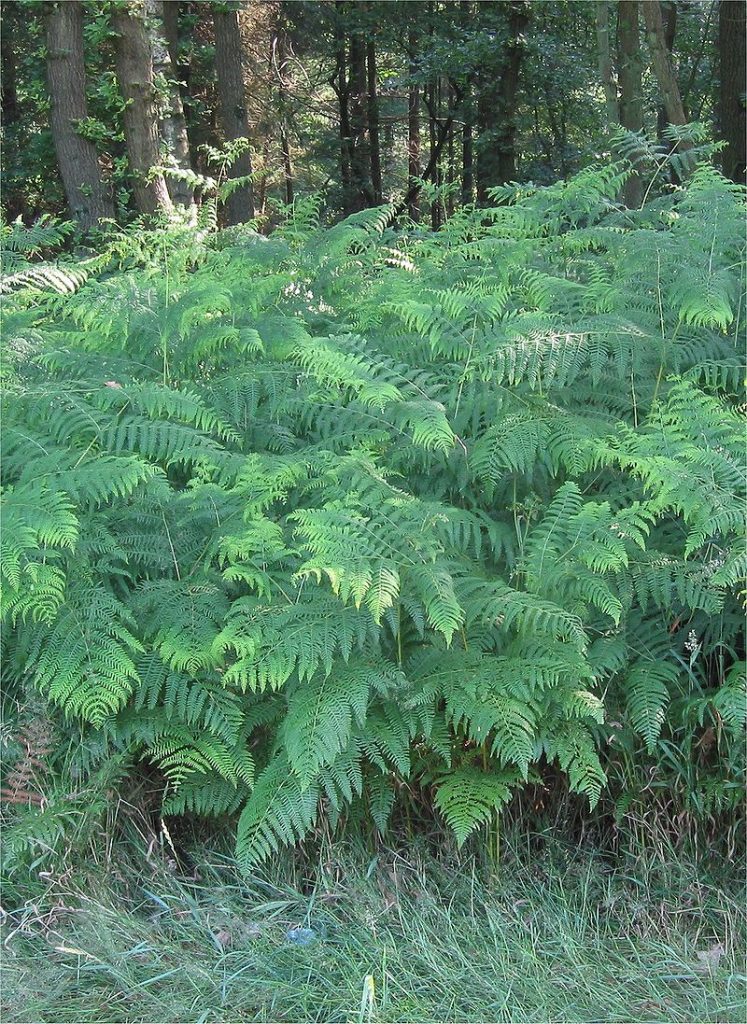
Also known as eagle fern, bracken fern is a herbaceous perennial and a member of the Dennstaedtiaceae family that includes 10 genera and 240 species of ferns. It is one of the most abundant ferns in the world and native to most of North America where it grows in a variety of habitats including open woodlands, meadows, savannas, thickets, marshes, burned areas and roadsides. The plants grow 3-4′ tall and consist of a rhizomatous root system that sends up coarse triangular fronds that are 2-3 times pinnately compound. The fronds are yellowish green to green and those of plants grown in the shade may be almost horizontal. The margins of the leaflets are rolled under and those of fertile fronds bear the reproductive structures. The fronds are sensitive to the cold and usually die back at the time of the first frost. Bracken is a vigorous plant and can become invasive because of its creeping rootstock. The fiddleheads that appear in the spring are sometimes eaten but contain carcinogens. The genus name, Pteridium, comes from Greek work pteris meaning fern. The specific epithet, aquilinum, comes from the Latin word aquila meaning eagle and refers either to the appearance of the transverse section of the root or the resemblance of the frond to an eagle’s wing. The common name, bracken, is an old English term for the plant. Photo Credit Rasbak Wikimedia Commons
Type: Herbaceous perennial
Bloom: None
Size: 3-4′ H x 4-5′ W
Light: Full sun to part shade
Soil: Average to lean, consistently moist, well-drained
Hardiness: Zones 3-10
Care: Contain when necessary
Pests and Diseases: None of significance
Propagation: Division
Companion Plants: Royal fern (Osmunda regalis), ostrich fern (Matteuccia struthiopteris)